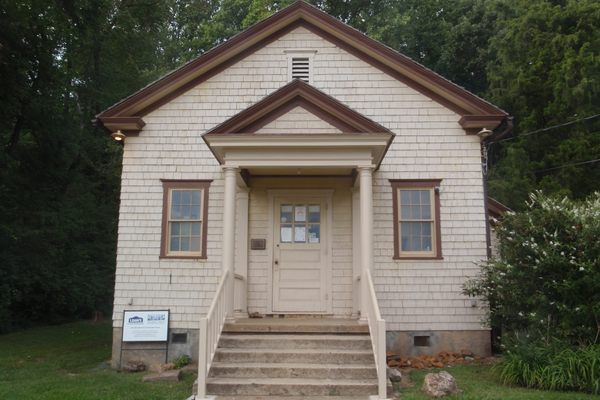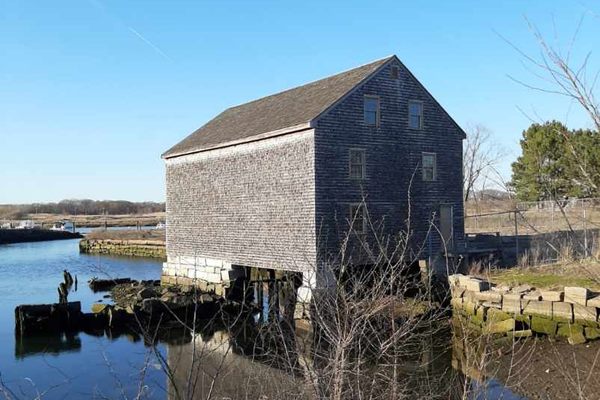AO Edited
Curtis Mill Park
This wildflower meadow was once the site of America's oldest operating paper mill and a symbol of Newark's manufacturing past.
If you’re going to write the history of a place, you’ll need a lot of paper. And for a time, there was no finer paper to be had than from the Curtis Paper Mill in Newark, Delaware. Today, a neighborhood park attracts birds and the occasional visitor to what was once the site of the oldest operational paper mill in America.
Although the site is now known as Curtis Mill Park, it predates the Curtises entirely. The mill’s history begins in 1789, when a Pennsylvanian man named Thomas Meeteer purchased the site and opened a sawmill called the Milford Mill. The mill remained in the Meeteer family through 1841. After a brief period where the site fell into debt and disrepair, it was purchased in 1848 by two brothers from Newton, Massachusetts: George B. and Solomon Minot Curtis.
The Curtises purchased the mill, but found it to be “in ruins,” according to local historians. They went into debt to rebuild the site nearly from scratch. The new firm, now named “Curtis and Brother,” opened the Nonantum Mill in 1850. The name was a reference to their old life in Newton, but the site quickly became known colloquially as the Curtis Paper Mill.
The mill would remain in operation for more than a century. By 1860, the mill was producing 500,000 pounds of paper each year. The mill would become known for its exquisite specialty products, such as cards, envelopes, or magazine paper, all made from cloth rags that were shredded, pulped, and molded by hand, as was common at the time. The company would continue to expand, and in 1896, it added a brick smokestack with the word “CURTIS” printed vertically that would eventually become an iconic symbol of the City of Newark.
The Curtis family were strong Union supporters during the Civil War, which was no sure thing in a border state such as Delaware. Perhaps for this reason, the company became a strong U.S. government supplier after the war, providing vellum, parchment, and other high-quality rag-based paper. During World War II, the U.S. government would rely on Curtis as a supplier, likely saving the company. The Curtis Paper Mill would make the paper used for many international treaties. In fact, the Japanese Instrument of Surrender that ended the war is written on paper produced by Curtis Mill.
The mill was owned by the Curtis family for three generations until the company was sold in 1926. The company, now renamed the Curtis Paper Company, remained independent for over 50 years, eventually picking up a mascot, “Little Joe Curtis.” The mill would change hands a few more times before eventually falling prey to the decline of the American manufacturing industry in 1997. At the time of its closure, it was the oldest paper mill in continuous operation in the country.
The site, now in the hands of Newark’s municipal government, was remediated as a brownfield to be converted into a park. Demolition of the mill began in 2002, lasting for more than five years. Originally, the smokestack was to be preserved as a symbol of the city, but restoration proved too expensive, and it too was removed in 2013. The park opened in October 2014, returning the site to life.
Today, the park is a wildflower meadow and passive recreational area, used mostly by migratory birds. Although the mill is gone, there are a few reminders of its original use. The former wastewater ponds are now clean lakes, and the millrace is used as a hiking trail. Bricks from the smokestack were salvaged and reused to build a plaza that shares an interpretive history of the park. At the park’s entrance, you can find the business’s mascot, “Little Joe Curtis,” who welcomes you to share in the bounty of Newark’s manufacturing and industrial history.



















Follow us on Twitter to get the latest on the world's hidden wonders.
Like us on Facebook to get the latest on the world's hidden wonders.
Follow us on Twitter Like us on Facebook